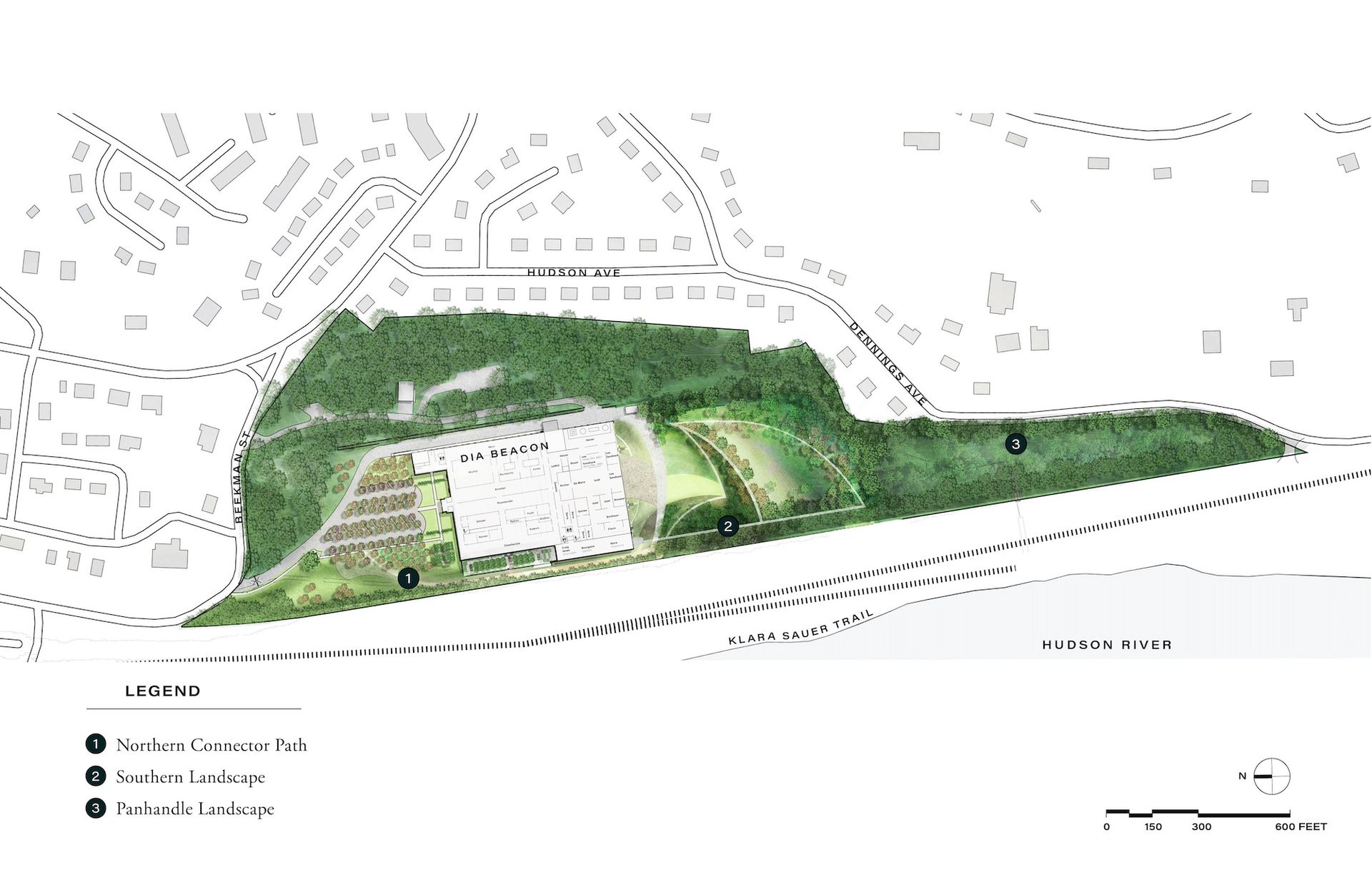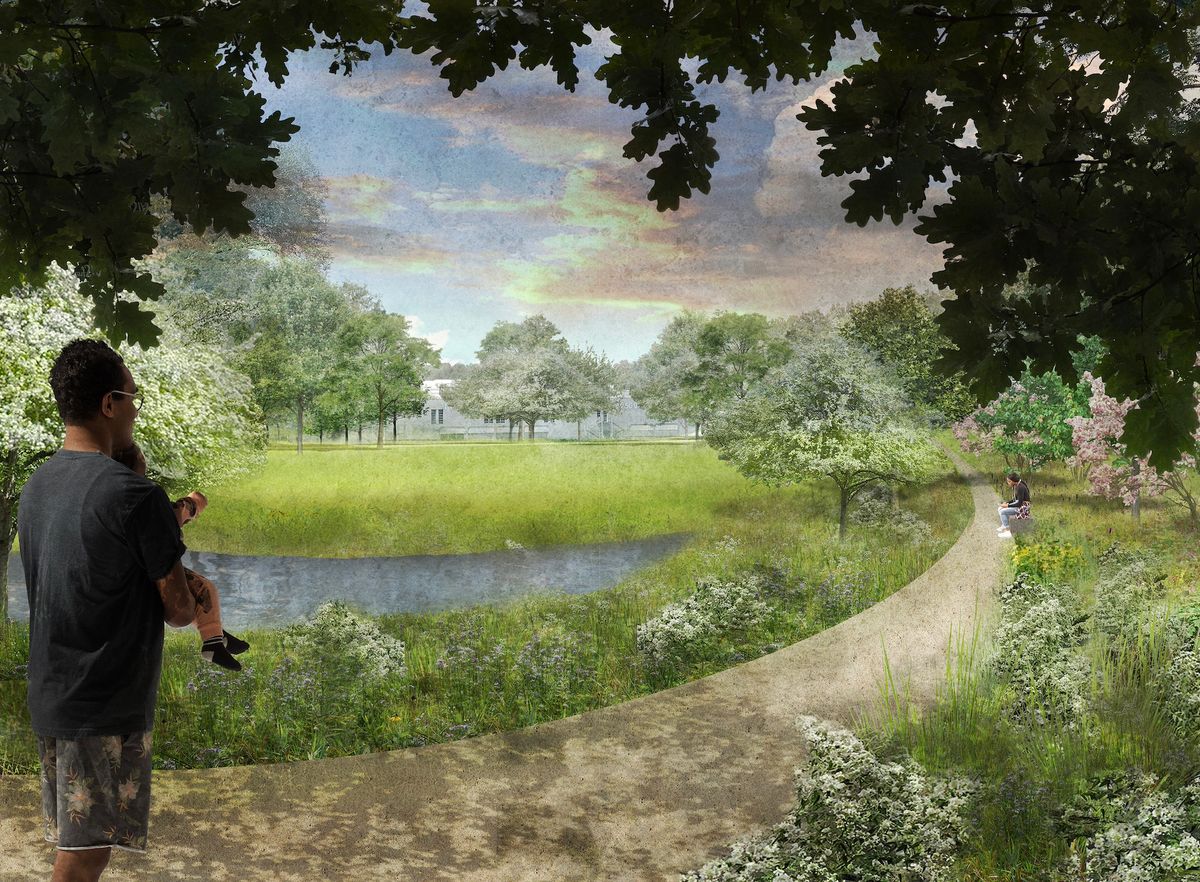The Dia Art Foundation is marking its 50th anniversary this year and looking to the future by taking on one of the pressing issues confronting all cultural institutions: climate change. Among its nine permanent sites and three exhibition spaces in the United States and Germany, Dia Beacon is facing especially acute risks of floods from storms and the Hudson River that the museum sits along. To protect the building and collections it houses, Dia has hired Studio Zewde to redesign eight acres of the campus, a major landscape overhaul that will turn soggy terrain into usable walkways and meadows. Crucially, it will also redirect the inevitable rain and floods, a design that works with the environment instead of against it.
“This project is a long time coming,” Jessica Morgan, Dia’s director, tells The Art Newspaper. “We have a wonderful amount of space along the back lawn that is flat and gathers water. This was particularly frustrating during the pandemic to have outdoor space that we couldn’t use.”
The landscape project will launch this summer in partnership with Sherwood Design Engineers, Larry Weaner Landscape Associates and Pine & Swallow Environmental. It will be funded with a small portion of a $50m campaign Dia is currently undertaking to mark its 50th anniversary. The team expects to open the landscape to the public in 2025. During museum hours, the grounds will be publicly accessible for the community to enjoy for free.
Morgan and her team started a search for a landscape architect and selected New York City-based Studio Zewde, led by Sara Zewde, in 2021. Among the concerns for Dia was finding someone who understood the land’s history, which includes the site of a brick factory and a former Nabisco box printing factory. The land is also in a historic flood plain. While the museum only received a small amount of flooding in the building during Hurricane Sandy, studies indicate it is likely to face rising water levels and increasingly devastating storms.

Rendering of Dia Beacon’s south landscape. Courtesy Studio Zewde, 2024
“Sara and her team stood out,” Morgan says. “They acknowledged the land’s history and let it inform their vision. One of the unique things about Studio Zewde is they have no singular style across their projects. They respond to a place and do extensive research.”
In approaching the project, Studio Zewde spoke with local leadership, museum staff and Indigenous groups and organisations, including the Lenape Center and Forge Project. This research helped the team understand the potential use of the site, as well as its role in Indigenous history as part of a passage across a narrow stretch of the Hudson.
“The specificity and idiosyncrasy of each project is something that I push our studio to tap into,” Zewde tells The Art Newspaper. “When we began, we showed Indigenous groups historic maps of the site and they told us they don’t understand history with maps, but rather through the ground. The remnants of history are all there.”
Studio Zewde’s design features sculptural landforms and plantings that allow water to pool in basins, directing it away from the building. The team emphasised east-west movement, a counterbalance to current the north-south passage ushered in by the Robert Irwin design of the landscape and parking lot at the front of the building.

Plan of Dia Beacon’s landscape renovation. Courtesy Studio Zewde, 2024
“There were three main things we braided together in our design: the ecological vulnerability, the museum experience and the Indigeneity of the land,” Zewde says. “The east-west orientation expresses that this site was a portage for Native people—a movement towards the river instead of along it.”
The design will also allow the museum to use the space for programming, and the public can walk along pathways surrounded by meadows that introduce a broad palette of colour and texture. The organic sculptural landforms mirror this Indigenous movement, acknowledging the fact that the land will flood and reorienting the water.
Dia has a history of working with the environment. “Our studio was inspired by the legacies of Land art that Dia has supported over the years and the idea that environmental processes can serve as a datum for people,” says Zewde. “We wanted to make visible that the land was once part of the river flood plain. In many ways, this project with Dia strengthens my belief in an open-ended approach to landscape architecture where, through mutual trust, we can be shaped by a wide range of people and challenges to design a relationship with the land where the land thrives and humans thrive.”


